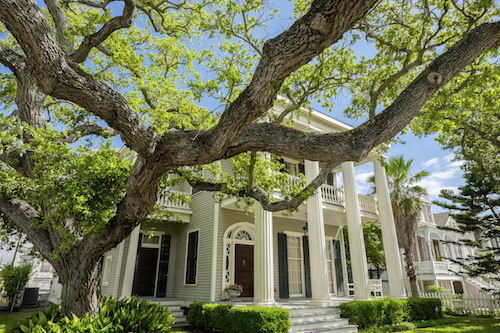
After eight years of the post-recession housing boom and the record-breaking price increases of recent years, the luxury residential market stabilized in 2017, according the luxury market report by The Institute for Luxury Home Marketing, a partner in the Coldwell Banker Global Luxury program.
In many U.S. luxury markets, 2017 saw price increases settle at more historically sustainable rates of growth, as inventory loosened and demand reached a “new normal.” As new wealth continues to grow, activity stabilized in the country’s power markets — or the top 5 and 10 percent for single-family homes and condos, respectively. Meanwhile, nontraditional luxury centers gained new opportunities thanks to mobility and a greater focus on lifestyle as inventory shortages continue to drive wealthy entry-level buyers to the fringes in ares like Silicon Valley and Brooklyn.
For the study, The Institute for Luxury Home Marketing and Coldwell Banker measured four key metrics in U.S. power markets.
The status of the luxury market
- Inventory of single-family detached luxury product increased 30 percent in 2017 over 2016.
- The overall median luxury sales price of single-family detached homes dropped slightly year over year but increased as much as 10 percent over the $1.5 million median luxury sales price during 2017.
- The number of sold luxury single-family detached homes fell compared to 2016.
- Median days on market for single-family detached homes rose from 35 to 40 in 2016 to 40 to 45 in 2017.
- The sales-price-to-list-price ratios for luxury single-family detached properties climbed 1 percentage point from 2016 to 98 percent in 2017, a significant price difference when it comes to million-dollar homes.
Power markets 2.0 and tech titans grow
- Second-tier Power Markets, a trend first identified in early 2016, showed continued strength in 2017, the result of increasing mobility and lifestyle factors.
- Markets with lower luxury median home prices are experiencing growth as high-net-worth money leaves more expensive cities. As location loses some priority among affluent buyers, mobility and accessibility increase and investors are finding more opportunity for returns outside of big-name cities.
- Fast-selling non-traditional luxury markets included Seattle, Silicon Valley, Austin, Dallas, Atlanta and Montgomery County just outside of Washington, D.C.
- Power markets with tech centers continued to be strong in 2017, as big tech companies bring high-paying jobs to markets and boost the luxury real estate sector.
- With the tech industry also comes a large number of buyers not originally from the United States, often with some financial support from families back home in Asia or Europe. These buyers are then able to out-bid locals who are more limited in terms of a down payment.
Luxury condo market thrives
- The luxury condo market is thriving, with median home price for high-end condos consistent not just year over year, but throughout 2017, at $850,000.
- The number of luxury condos sold in 2017 dipped only slightly from the previous year, with new listings increasing 20 percent.
- The average days on market fell from 35 in 2016 to 33 in 2017. Notable luxury median markets that saw a decline in days on the market were Austin, Boston, Boulder, Denver, Sacramento, St. Louis and Portland.
- Recent luxury condo activity may be an indicator of where investment money is heading. If investors aren’t expecting to see large gains in the single-family detached segment, will they move to find opportunity in the luxury townhouse and condo market?
